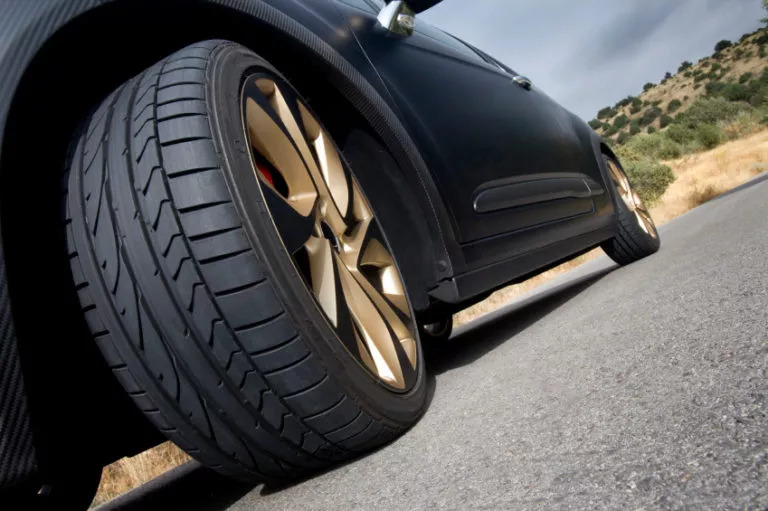
We all know what driving a new car feels like. The smell of the leather is intoxicating. There isn’t a scratch in the paint, a ding on the door. The rolling along on open pavement with a sense of exhilaration and freedom is so powerful that being stuck in rush hour traffic seems like a stroll on the beach. But as your car ages, all of those feelings start to wear off – the leather has stains, the paint fades and road seems more bumpy. Your car handles differently as well. It just doesn’t drive quite so straight. The good news is that besides getting a thorough detailing to bring it back to its former glory, restoring harmony with the road is as easy as replacing your tires. They are the unsung hero of your car and need regular attention.
So how do you know when it is time to replace them? The general rule of thumb was at 40,000 miles, you should invest in a good set of new rubber. However, with deteriorating road conditions and how you actually drive your car (city vs. highway), this number can differ dramatically. Also, the kind of vehicle is a determinant as well. Low profile tires, used for higher performance on sportier model cars, aren’t as durable as those found on SUVs. Complicated, yes. But determining your own needs is as simple as it gets.
The proven method of determining tire health is the “Penny Method.” Take a penny and turn it upside down, sticking it into the tread to measure its depth. If you can’t see Lincoln’s head, then there is plenty of tread remaining on the tire. If you can see it, they need changing.
Where this method is perfectly functional, most modern-day tires now have “wear bars” the factory has inserted in the middle of the tire tread, which makes knowing the condition even easier. These bars run perpendicular to the tread and go undetected when the tires are new. But as your drive and the rubber wears down, the bars become more visible. When they are at the same level as the tire, it is time to change them out.
Driving on worn tires has other implications other than just a rough ride. The inferior contact to the road causes hydroplaning (or an uncontrollable slide on wet surfaces), the driver needs more time to brake because of less grip to the road, and the loss of elasticity to handle cracks and potholes causes your car to veer unsafely into other lanes. A quick visual inspection can save you from a fender bender or something much more serious and it takes less than 5 minutes to perform. If you are riding on a new set of tires and are still experiencing uncomfortable handling, have a licensed mechanic take a look at the brakes, suspension or wheel balance.
Driving on new tires restores that ‘new car’ feeling as well as ensuring an overall uptick of safety for you and your passengers. Remember to always change tires even if only one needs replacing. This keeps your car in overall better balance. Check your tire health proactively today and navigate any future bumps in the road with ease. Learn more useful road trip tips. To schedule an appointment contact John’s Auto Care.